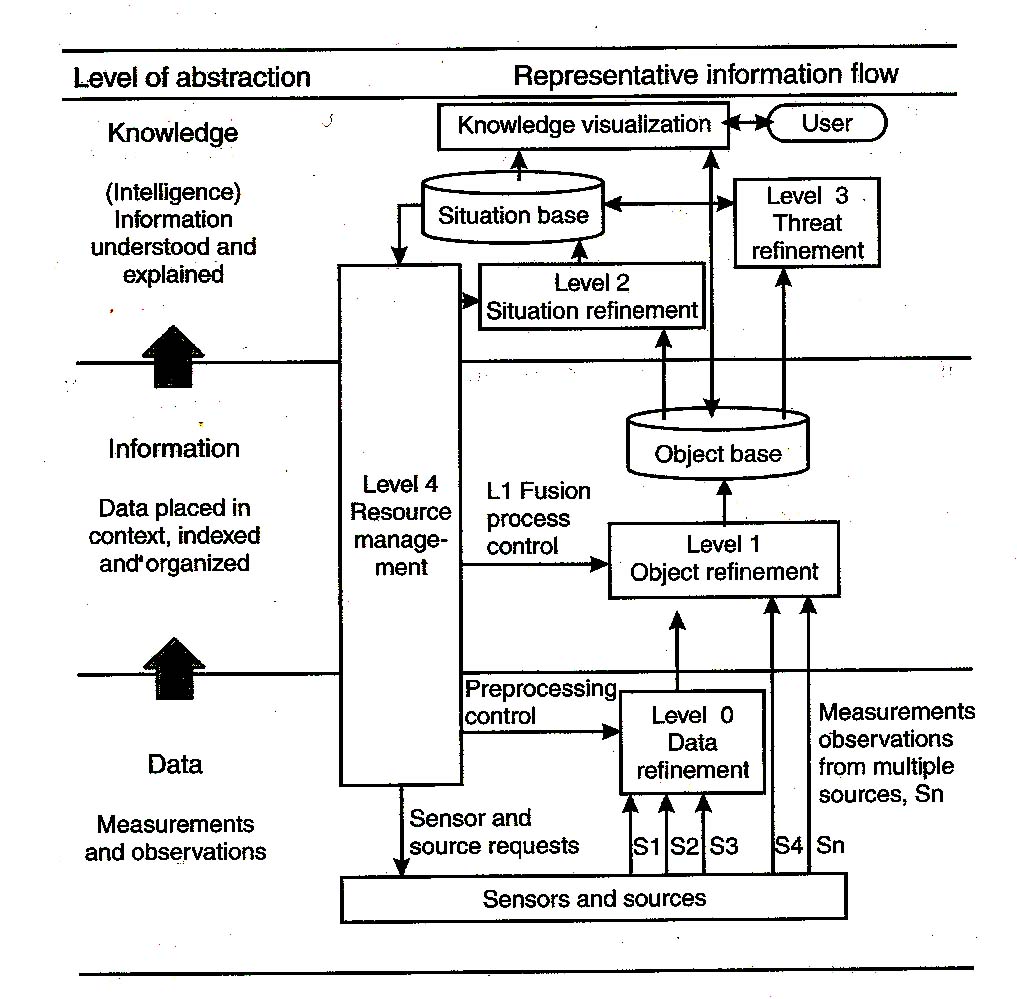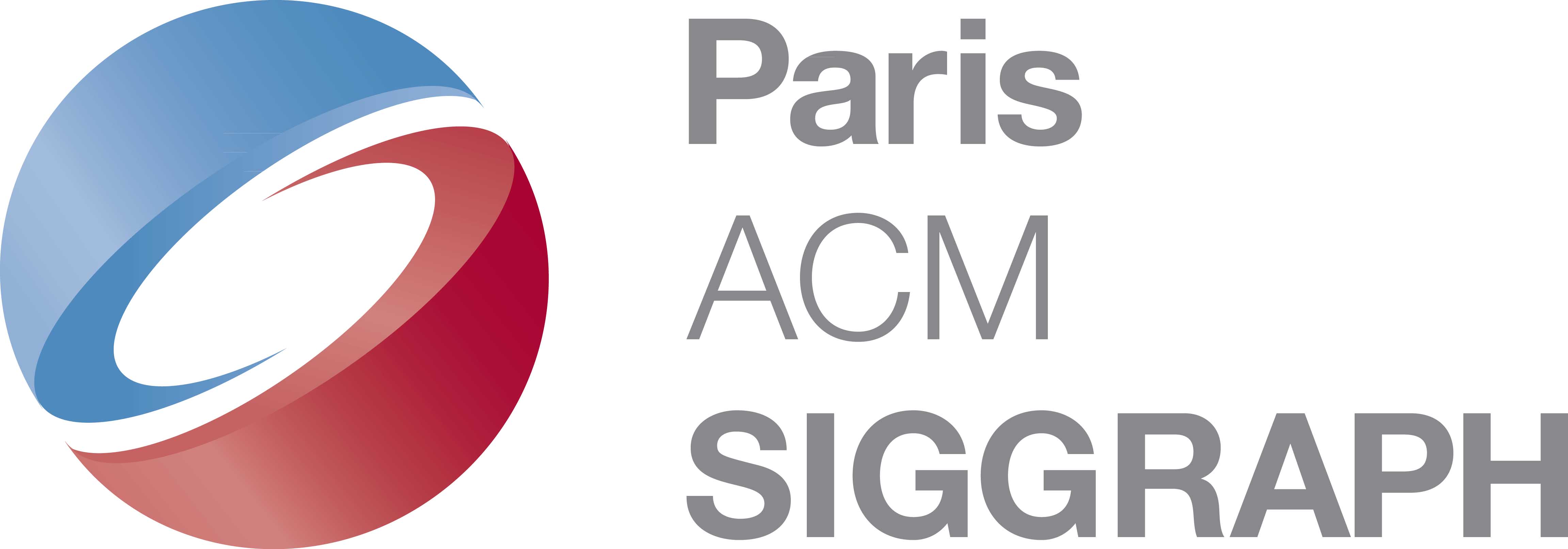Perception
Last revised 9/6/2014. Return to Major concepts. See behavior.

When we say that a machine (and notably a digital work of art) "perceives" something, that is not to say that is does it consciously, like a human being, but that it extracts from what he gets from the external wold some data that it can use to behave and produce.
Perception is a process with levels. The best expression of this progression is the "data fusion" model of the DOD (Department of Defense), of which we show here a synthtetic view taken from Information Warfare. Principles and Operations, by Edward Walts (Artech 1998).
Low level: sensors
At the basic, hardware, level are the sensor, be it in live beings or in machines.
Sensors include hardware and software parts.
The hardware part transforms any input into rasters of binary values; for most sensors, the raster has time as one its dimension, the second one as a sample value; typically: amplitude of a sound wave, wind speed; image sensors provide a series of 2 dimensions images, each pixel being more or less deeply coded (from one bit for black white to 24 bits and more for color images).
Elaborate sensor systems include mechanical moves of the capturing device, for example the rotations of a radar antenna or the complex moves of human vision.
Today, cameras and microphones
are cheap sensors, potentially powerful if used with high level software. Combined
interfaces like the Kinect offer today easy
to use (including open source software) sensing devices. But in fact, even today
many "interactive" works of art have nothing more than some switch
or cell to detect a presence.
The software part includes the drivers for the hardware, but more importantly
deals with coding.
See also a 2003 technical notice (in French) or Wikipedia
Recent example:
Electronic skin can sense the direction in which it's being touched By Richard Moss December 12, 2014
Higher level: coding
This basic level provides rasters of values (see form). But, more importantly, the software transform the raster into meaningful code. It recognizes patterns, detect beings, evaluate audience attitudes in order to feed the coding level of the work. Some detection and recognition code is provided freely by OpenCV. For living beings, these functions are dealt with in specific brain areas.
[Aziosmanoff] who uses the term restrictively (perception of the public by the work) insists on this point for a higher design of work of art.
In transmedia, "Just as the brain detects patterns in the visual forms of nature - a face, a figure, a flower - and in sound, so too it detects patterns in information" ( [Rose], p. 1).
Some references
- Emergence of a space medium. Aesthetic and technical study of spatial perception in virtual reality. by François Garnier. Communication at Vric 2011. Online.
Perception of public attitudes by a robot. A note of the Georgia Tech (8/3/2011)
< Pattern Recognition by José Francisco Martínez-Trinidad, Jesús Ariel Carrasco-Ochoa, Cherif Ben-Youssef Brants, Edwin Robert Hancock. LNCS (Lecture notes on computer sciences) Volume 6718. Springer, c. 2010.

Perception of the public by an interactive work must go beyond a mere perception of its presence; what matters is attitude, attention, behavior of the audience, as explains Aziosmanoff. Here a work by Lozano-Hemmer, shown at Gaité Lyrique (Paris). Using function of Open-CV type, the work detects sufficiently stable eyes, and then burns them into smoke.
< Computer Analysis of Images and Patterns by Pedro Real, Daniel Diaz-Pernil, Helena Molina-Abril, Ainhoa Berciano, Walter Kropatsch.LNCS (Lecture notes on computer sciences) Volume 6854. Springer, c. 2010.
-<3D shape. Its unique place in visual perception. by Zygmunt Pizlo. MIT Press 2010.
-
Some data in our l notice (in French 2003). .
- Basic schemes
using Arduino boards are proposed in the literature related to this product.
- Eobody box of Ircam AH No 98 (actualité).-
- Interview
of Alain Berthoz AH No 21
- Pattern recognition in [Gonzalez 2002 ] .
< Shape analysis and classification, theory and practice. by Luciano
da Fontoura Costa and Roberto Marcondes Cesar. CRC Press, Boca Raton, 2001. An extended and didactical handbook of 659 pages.
- Les artistes et la perception, by Marcin Sbieszczanski.. Interviews with Z. Dlubak, J. Bury, E. Riveiro and B. Caillaud , Paris, L'Harmattan 2000,
- Introduction to perception-based visualization. Course notes. by Stephen
Eidk et al. Siggraph 1994.
DICCAN'S PARTNERS:

Paris ACM Siggraph, the French chapter of ACM Siggraph, worldwide non-profit organization of computer graphics.

Galerie Charlot An important supporter of digital art.